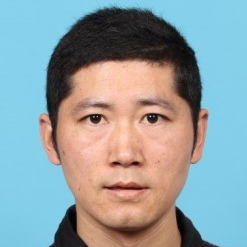Recently Research on Eutectic Alloy Materials
A special issue of Crystals (ISSN 2073-4352). This special issue belongs to the section "Crystalline Metals and Alloys".
Deadline for manuscript submissions: closed (31 December 2023) | Viewed by 3454
Special Issue Editors
Interests: metallurgy and material preparation under strong magnetic field; rapid solidification; melt structure transition; eutectic alloys
Interests: high magnetic field; alloy solidification; electromagnetic processing of materials; X-ray tomography
Interests: solidification process; synchrotron radiation X-ray imaging
Interests: eutectic alloys; multi-principal element alloys; non-equilibrium rapid solidification
Special Issue Information
Dear Colleagues,
Eutectic alloys have always been an important structural material in engineering due to their unique self-composite microstructures and excellent casting performances. The mechanical properties of the material depend on its solidification microstructure characteristics; consequently, the solidification behavior study of microstructure evolution and anomalous eutectic and eutectic colony structure formations in undercooled binary eutectic melts have attracted considerable interest for some decades. An undercooled rapid solidification study also plays an important role in clarifying grain refinement mechanisms and developing a solidification theoretical model of eutectic alloys. Conventional eutectic alloys are composed of one or two main elements, and their performances are mainly improved by adding a small amount of other elements. In recent years, eutectic high-entropy alloys composed of multiple main elements have rapidly become a new research hotspot. The development of eutectic high-entropy alloys is without the restriction of single-phase alloys and binary eutectic alloys, which cannot have a high strength and high plasticity at the same time, providing broad development ideas for the design of new structural material systems. Since then, a series of eutectic high-entropy alloys with a high strength, high plasticity and high thermal stability have been designed and developed under the action of many unique effects, such as the sluggish diffusion of high-entropy alloys. Studies have shown that eutectic alloys with micro-sized grains exhibit a superplastic strain; therefore, eutectic refinement methods and mechanisms are always an important field worthy of further study. With the development of laser-additive manufacturing and other preparation technologies, it also provides a new way to prepare refined nano-eutectic and develop new complex eutectic alloys. It should be noted that there are still significant challenges to clarify the physical metallurgy mechanism of multi-principal element alloys and develop complex eutectic alloys on demand. Therefore, the design and preparation of controllable high-strength and good-plasticity eutectic alloys will remain the focus of future research on structural materials.
Dr. Yixuan He
Dr. Tianxiang Zheng
Dr. Zongye Ding
Dr. Jianbao Zhang
Dr. Fan Bu
Guest Editors
Manuscript Submission Information
Manuscripts should be submitted online at www.mdpi.com by registering and logging in to this website. Once you are registered, click here to go to the submission form. Manuscripts can be submitted until the deadline. All submissions that pass pre-check are peer-reviewed. Accepted papers will be published continuously in the journal (as soon as accepted) and will be listed together on the special issue website. Research articles, review articles as well as short communications are invited. For planned papers, a title and short abstract (about 100 words) can be sent to the Editorial Office for announcement on this website.
Submitted manuscripts should not have been published previously, nor be under consideration for publication elsewhere (except conference proceedings papers). All manuscripts are thoroughly refereed through a single-blind peer-review process. A guide for authors and other relevant information for submission of manuscripts is available on the Instructions for Authors page. Crystals is an international peer-reviewed open access monthly journal published by MDPI.
Please visit the Instructions for Authors page before submitting a manuscript. The Article Processing Charge (APC) for publication in this open access journal is 2600 CHF (Swiss Francs). Submitted papers should be well formatted and use good English. Authors may use MDPI's English editing service prior to publication or during author revisions.
Keywords
- eutectic alloys
- rapid solidification
- anomalous eutectic alloys
- dendrite eutectic alloys
- nano-eutectic alloys
- eutectic high-entropy alloys









